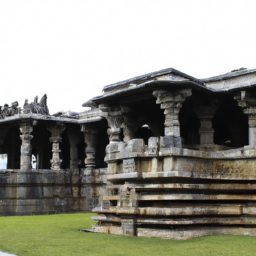Unveiling the History of Warangal

Warangal, a city steeped in history and culture, stands as a testament to the grandeur of ancient Indian dynasties. Once the capital of the Kakatiya dynasty, this vibrant city in Telangana is rich in heritage, architectural marvels, and tales of valour. As you delve into the history of Warangal, prepare to be captivated by its stories that echo through time.
The Kakatiya Dynasty: A Golden Era
The Kakatiya dynasty (12th to 14th centuries) is the cornerstone of Warangal’s historical significance. Founded by Prola Raja I, this dynasty transformed Warangal into a flourishing capital known for its architectural prowess and cultural advancements. Under rulers like Ganapati Deva, Rudrama Devi, and Prataparudra II, Warangal witnessed a golden age marked by the construction of monumental structures such as the Warangal Fort and the Thousand Pillar Temple.
Key Rulers and Their Contributions
|
Ruler |
Reign |
Contributions |
|
Prola Raja I |
12th Century |
Established Kakatiya rule; initiated construction |
|
Ganapati Deva |
1199-1262 |
Expanded the fort; promoted irrigation |
|
Rudrama Devi |
1262-1289 |
Strengthened fortifications; notable woman ruler |
|
Prataparudra II |
1289-1323 |
Last significant ruler; faced invasions |
The Kakatiyas were not just warriors but also patrons of art and culture. They constructed numerous temples dedicated to Lord Shiva, showcasing intricate carvings and architectural finesse. The Thousand Pillar Temple, built in 1162, remains one of their most celebrated legacies.
The Fort: A Symbol of Resilience
The iconic Warangal Fort, with its massive granite walls and four ornate gateways, is a remarkable example of Kakatiya architecture. Originally built in the 12th century, it served as a stronghold against invasions, notably during the siege by Malik Kafur in 1309. Despite facing formidable challenges, the fort stands resilient, embodying the spirit of its builders.
Architectural Features
- Kakatiya Kala Thoranam: The fort’s gates are adorned with exquisite carvings that reflect the artistic brilliance of the era.
- Stone Structures: The fort showcases robust stone construction techniques that have withstood the test of time.

Post-Kakatiya Era: A Shift in Power
After the decline of the Kakatiyas, Warangal fell into the hands of various rulers, including the Musunuri Nayakas and later the Bahmani Sultanate. By 1687, it became part of the Mughal Empire, which further influenced its cultural landscape. The city transitioned through different regimes until it was integrated into independent India in 1948.
Timeline of Significant Events
|
Year |
Event |
|
1323 |
Fall of Kakatiya dynasty to Tughlaq forces |
|
1948 |
Integration into India post-independence |
|
1956 |
Became part of Andhra Pradesh under Reorganisation Act |
|
2014 |
Formation of Telangana state |
Cultural Heritage and Modern Significance
Today, Warangal is not just a historical site but also a thriving urban centre known for its carpets, blankets, and silks. It serves as a bridge between its glorious past and modern aspirations. The remnants of its rich history are evident in its architecture, festivals, and local traditions.
FAQs about Warangal’s History
- What is Warangal known for?
Warangal is renowned for its historical significance as the capital of the Kakatiya dynasty and its architectural marvels like Warangal Fort and Thousand Pillar Temple. - Why is it called Orugallu?
The name “Orugallu” translates to “one stone,” referring to a large granite boulder that is part of Warangal Fort’s structure. - What are some must-visit historical sites in Warangal?
Key sites include Warangal Fort, Thousand Pillar Temple, Ramappa Temple, and Ghanpur Group of Temples.

Conclusion
The history of Warangal is a rich tapestry woven with tales of valor, artistry, and resilience. From its majestic forts to intricate temples, every corner tells a story waiting to be discovered. Whether you’re an avid historian or a casual traveller seeking beauty and culture, Warangal offers an enchanting journey through time.





